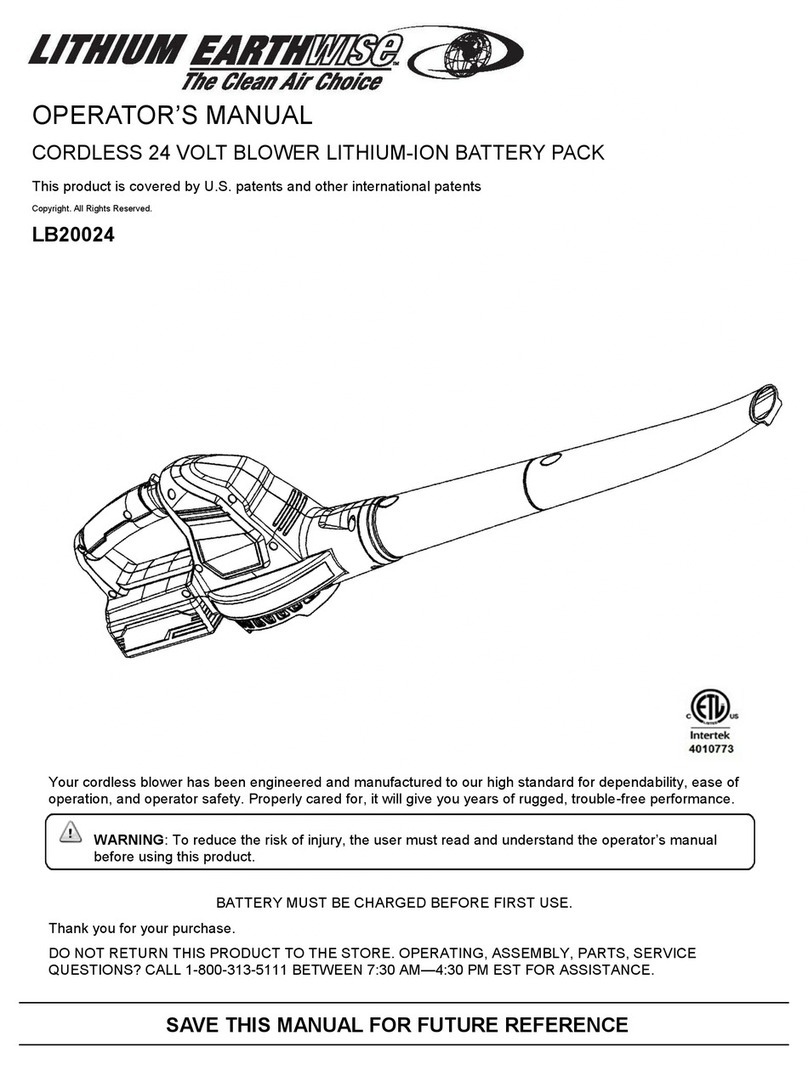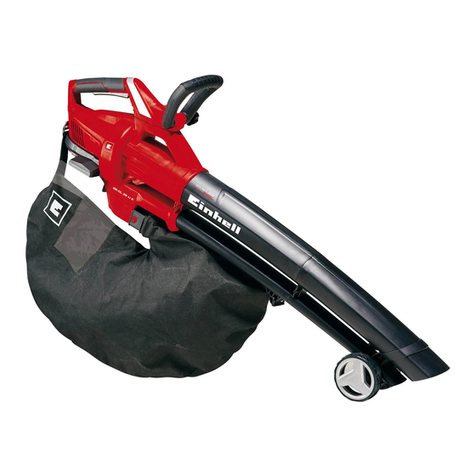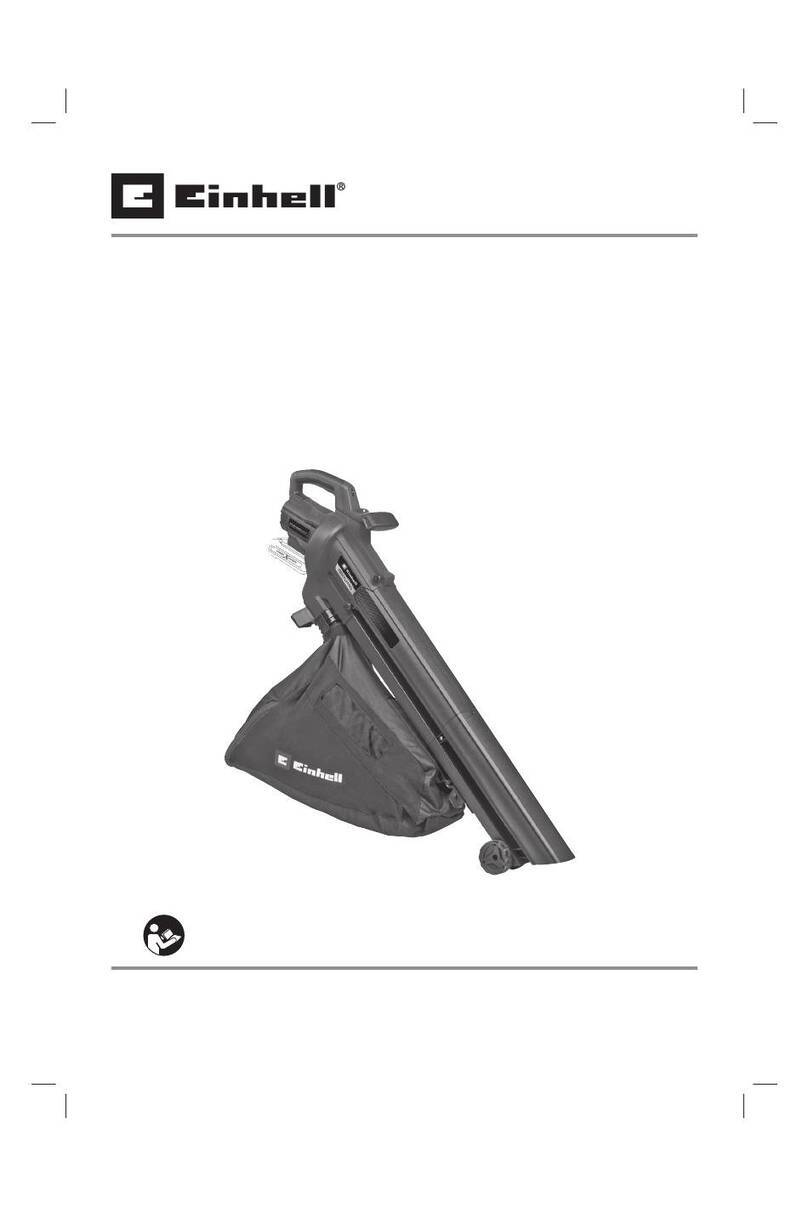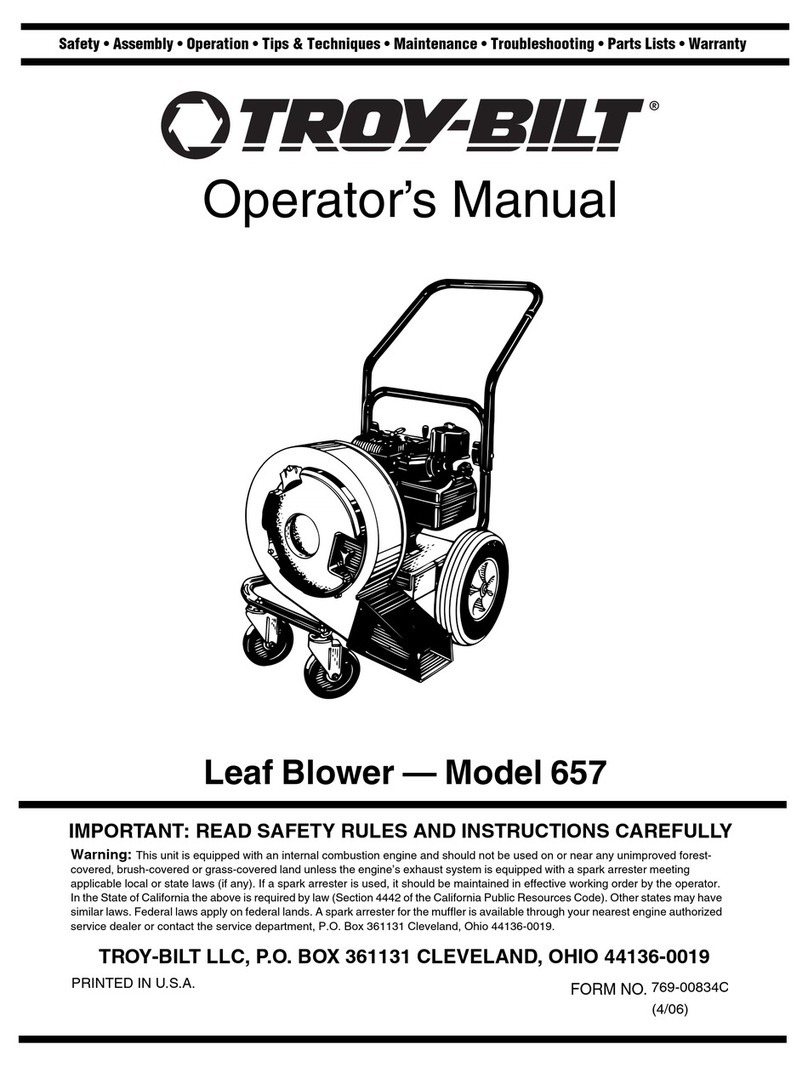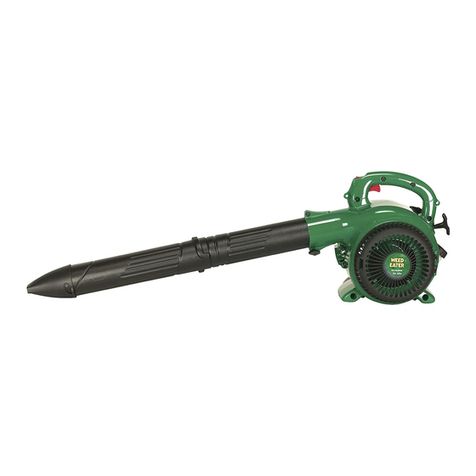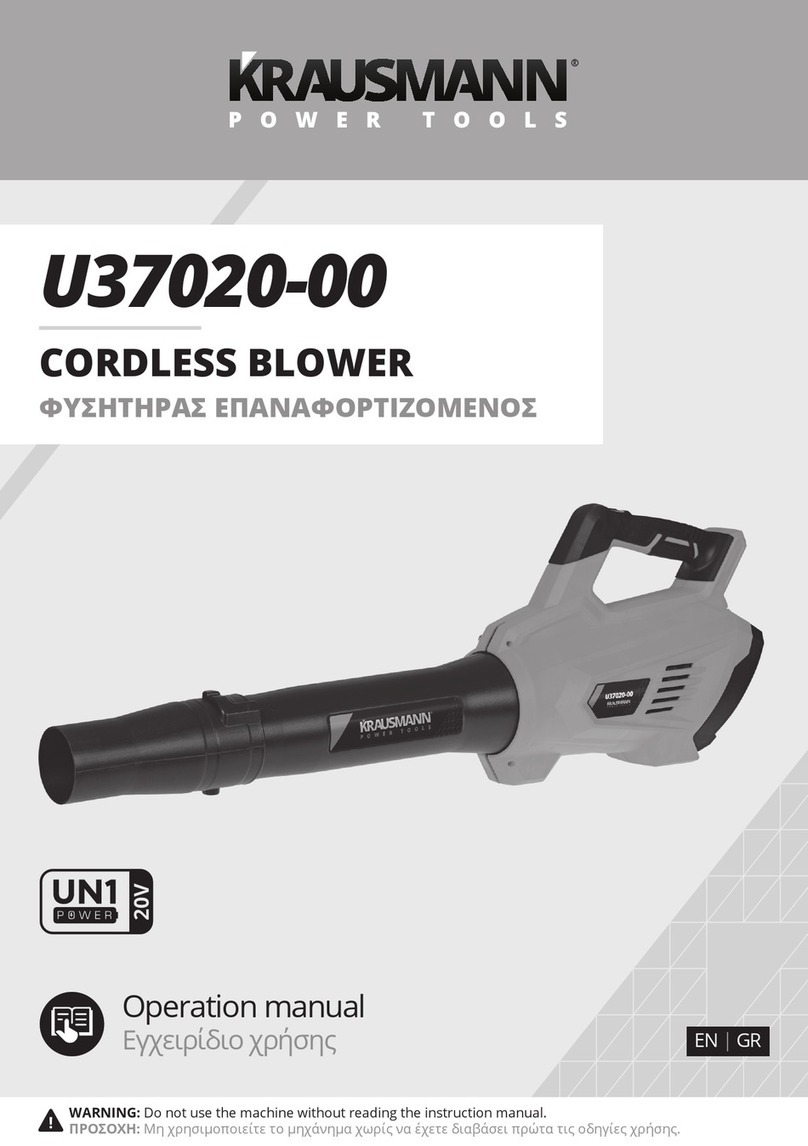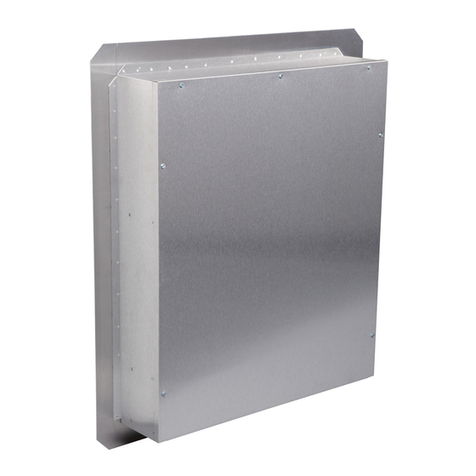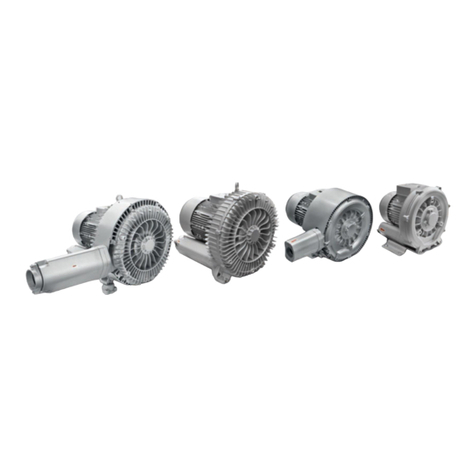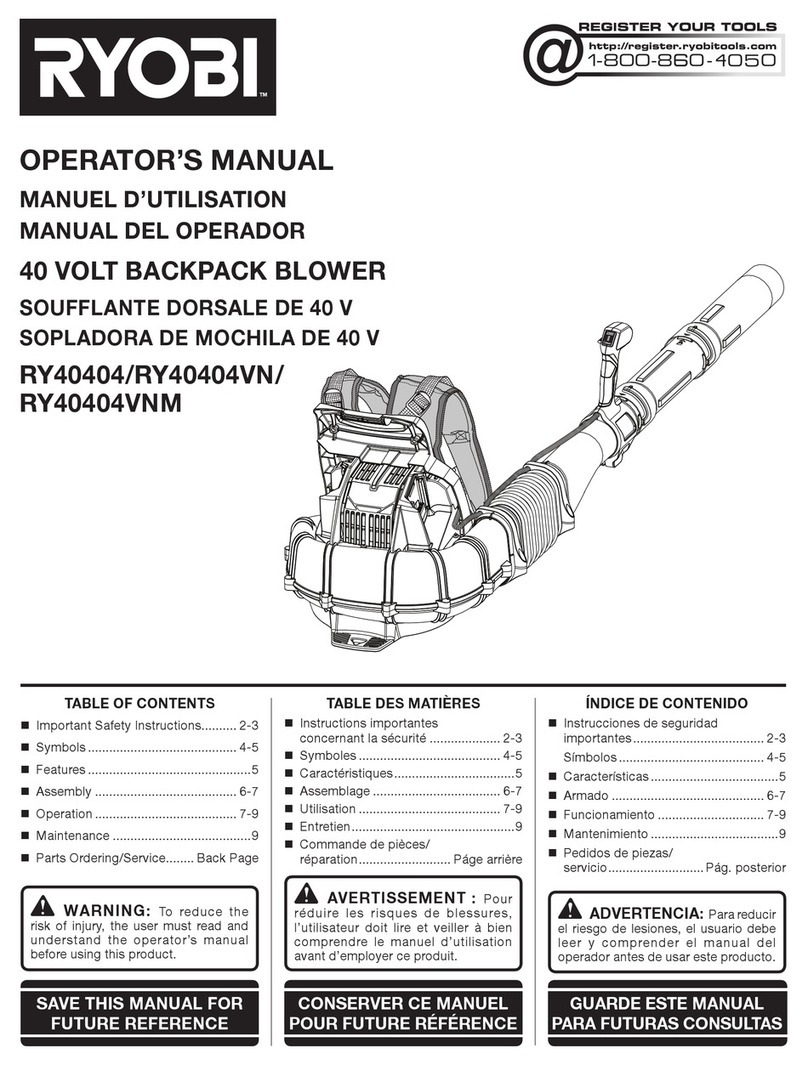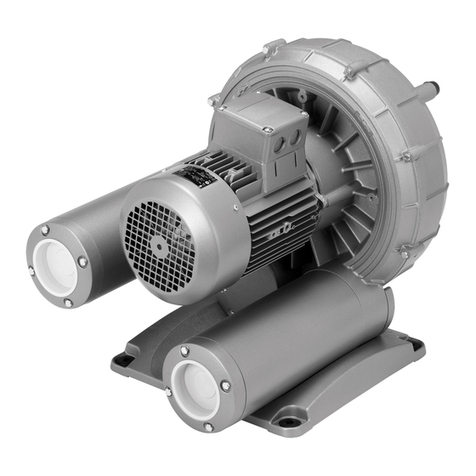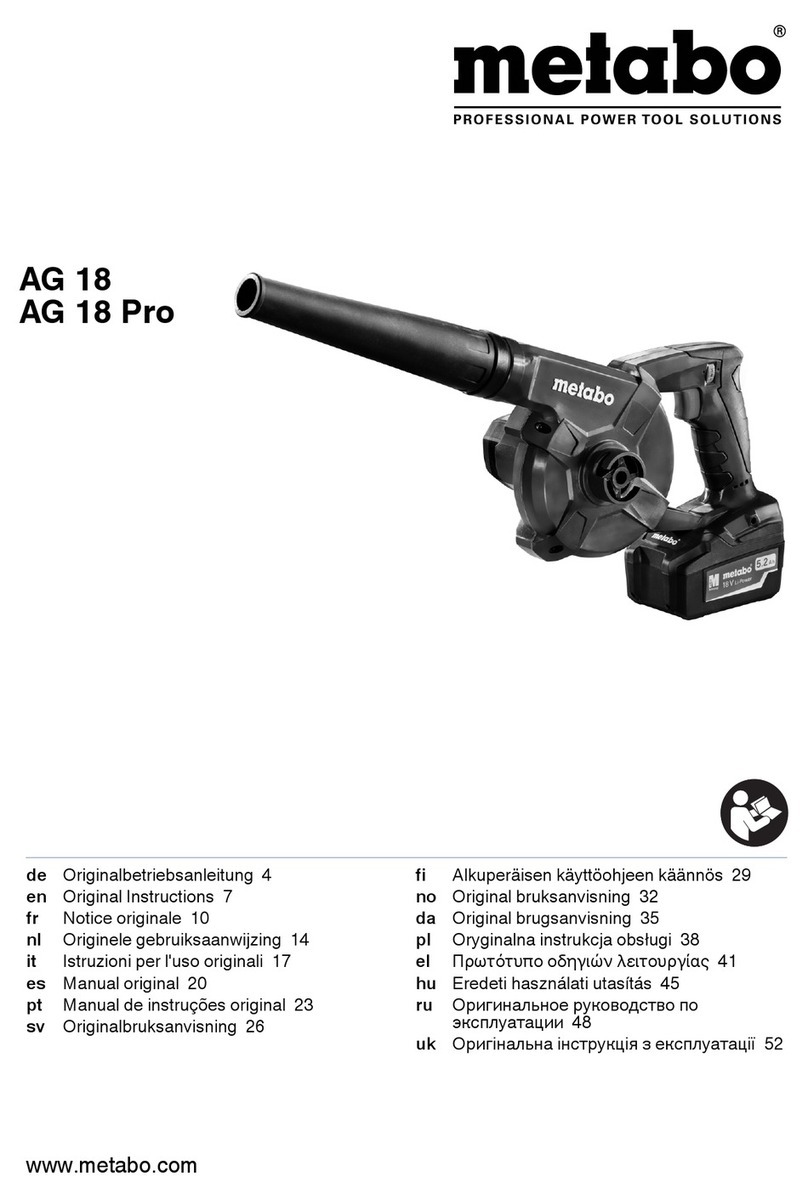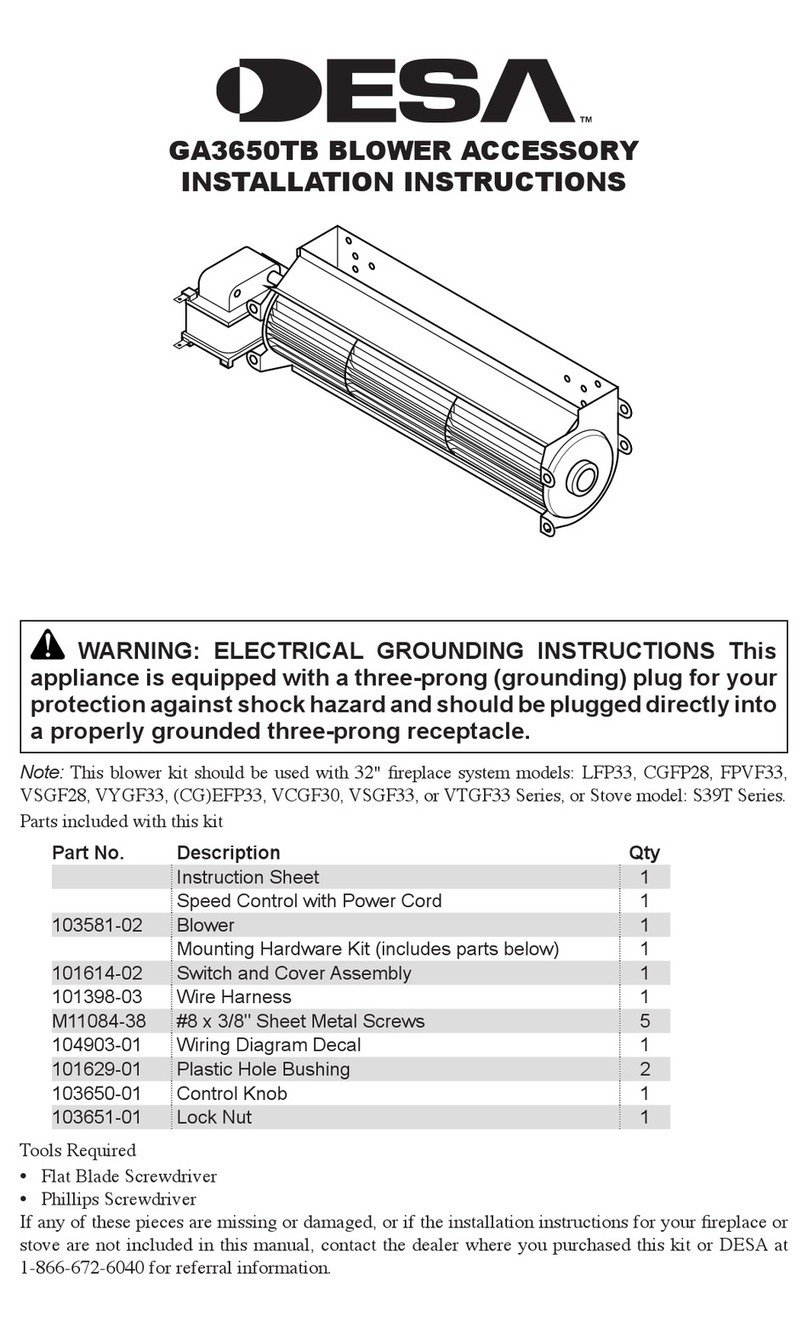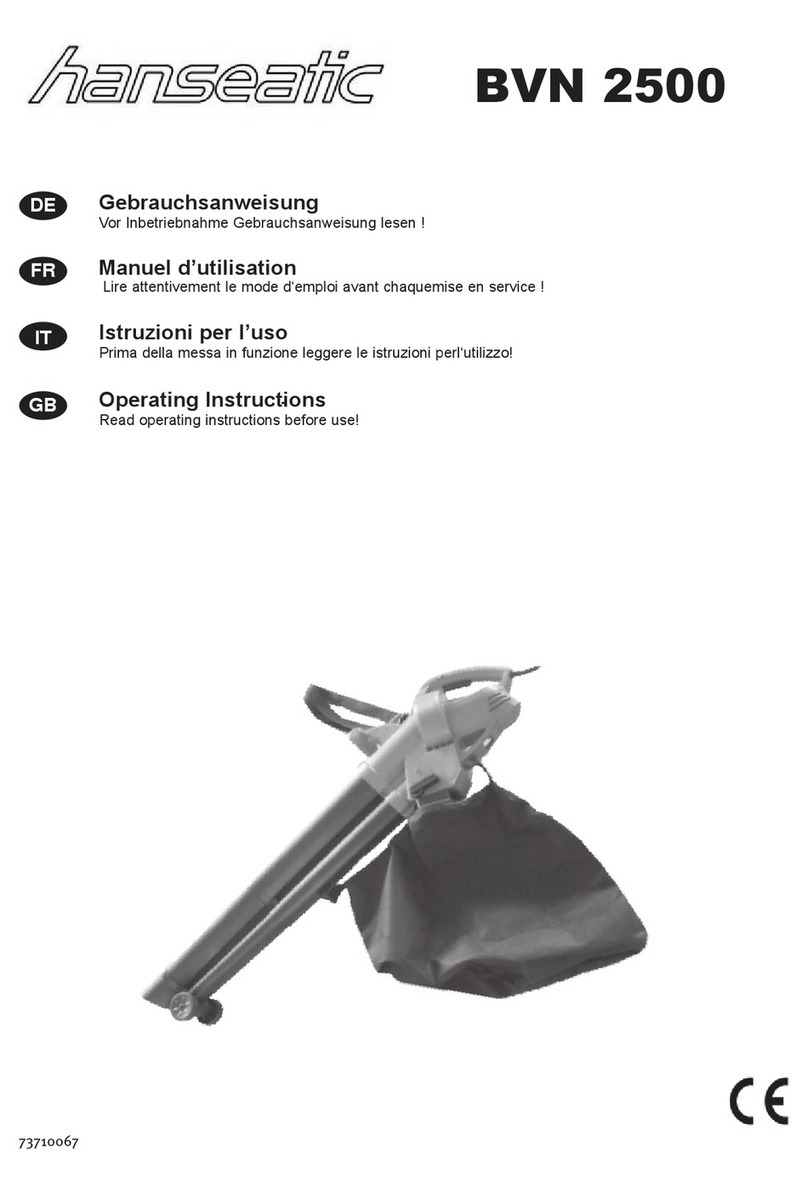Operation
1. Before starting the machine, ensure that the feeding
chamber is empty.
2. Keep your face and body away from the feed intake
opening.
3. Do not allow hands, any other parts of the body, or
clothing inside the feeding chamber, discharge chute, or
near any moving part.
4. Keep proper balance and footing at all times. Do not
overreach. Never stand at a higher level than the base of
the machine when feeding material into it.
5. Always stand clear of the discharge zone when
operating this machine.
6. When feeding material into the machine, be extremely
careful that pieces of metal, rocks, bottles, cans or other
foreign objects are not included.
7. If the machine should start making any unusual noise or
vibration, immediately switch it off and allow the machine
to stop. Remove the battery pack from machine and take
the following steps before restarting and operating the
machine:
a) Inspect for damage.
b) Replace or repair any damaged parts.
c) Check for and tighten any loose parts.
8. Do not allow processed material to build up in the
discharge zone; this may prevent proper discharge and
can result in kickback of material through the intake
opening.
9. If the machine becomes clogged, switch it off and
remove the battery pack from machine before cleaning the
debris.
10. Keep the power source clean of debris and other
accumulations to prevent damage to the power source
and possible fire.
11. Do not transport this machine while the power source is
running.
12. Stop the machine and remove the battery pack from the
machine. Make sure that all moving parts have come to a
complete stop
- whenever you leave the machine,
- before clearing blockages or unclogging chute,
- before checking, cleaning or working on the machine.
13. Do not tilt the machine while the power source is
running.
Maintenance and Storage
1. When the machine is stopped for servicing, inspection, or
storage, or when you need to change an accessory, switch
off the machine, remove battery pack and make sure that all
moving parts have come to a complete stop. Allow the
machine to cool before making any inspections,
adjustments, etc. Maintain the machine with care and keep
it clean.
2. Store the machine in a dry place out of reach of children.
3. Always allow the machine to cool down before storing it.
4. Replace worn or damaged parts for safety. Use only
genuine replacement parts and accessories.
General Power Tool Safety
Warnings
The term "power tool" in the warnings refers to your main-
operated (corded) power tool or battery-operated (cordless)
power tool.
Work Area Safety
1. Keep work area clean and well lit. Cluttered or dark areas
invite accidents.
2. Do not operate power tools in explosive atmospheres,
such as in the presence of flammable liquids, gases, or
dust. Power tools create sparks which may ignite the dust
or fumes.
3. Keep children and bystanders away while operating a
power tool. Distractions can cause you to lose control.
Electrical Safety
1. Power tool plugs must match the outlet. Never modify
the plug in any way. Do not use any adapter plugs with
earthed (grounded) power tools. Unmodified plugs and
matching outlets will reduce the risk of electric shock.
2. Avoid body contact with earthed or grounded surfaces,
such as pipes, radiators, ranges and refrigerators. There
is an increased risk of electric shock if your body is
earthed or grounded.
3. Do not expose power tools to rain or wet conditions.
Water entering a power tool will increase the risk of
electric shock.
4. Do not abuse the cord. Never use the cord for carrying,
pulling or unplugging the power tool. Keep the cord away
from heat, oil, sharp edges or moving parts. Damaged or
entangled cords increase the risk of electric shock.
5. When operating a power tool outdoors, use an
extension cord suitable for outdoor use. Use of a cord
suitable for outdoor use reduces the risk of electric shock.
6. If operating a power tool in a damp location is
unavoidable, use a residual current device (RCD)
protected supply. Use of an RCD reduces the risk of
electric shock.
Personal Safety
1. Stay alert, watch what you are doing and use common
sense when operating a power tool. Do not use a power
tool while you are tired or under the influence of drugs,
alcohol, or medication. A moment of inattention while
operating power tools may result in serious personal
injury.
2. Use personal protective equipment. Always wear eye
protection. Protective equipment such as dust mask, non-
skid safety shoes, hard hat, or hearing protection used for
appropriate conditions will reduce the risk
of injury.
3. Prevent unintentional starting. Ensure the switch is in
the off-position before connecting to the power source
and/or battery pack, picking up, or carrying the tool.
Carrying power tools with your finger on the switch or
power tools that have been turned on invites accidents.
4. Remove any adjusting key or wrench before turning
the power tool on. A wrench or a key left attached to a
rotating part of the power tool may increase the risk of
injury.
5. Do not overreach. Keep proper footing and balance at
all times. This enables better control of the power tool in
unexpected situations.
6. Dress properly. Do not wear loose clothing or jewelry.
Keep your hair, clothing and gloves away from moving
parts. Loose clothes, jewelry or long hair can be caught
by moving parts.
7. If devices are provided for the connection of dust
extraction and collection facilities, ensure that these are
connected and properly used. Use of dust collection can
reduce dust-related hazards.
Power Tool Use and Care
1. Do not force the power tool. Use the correct power tool
for your application. The correct power tool will do the job
